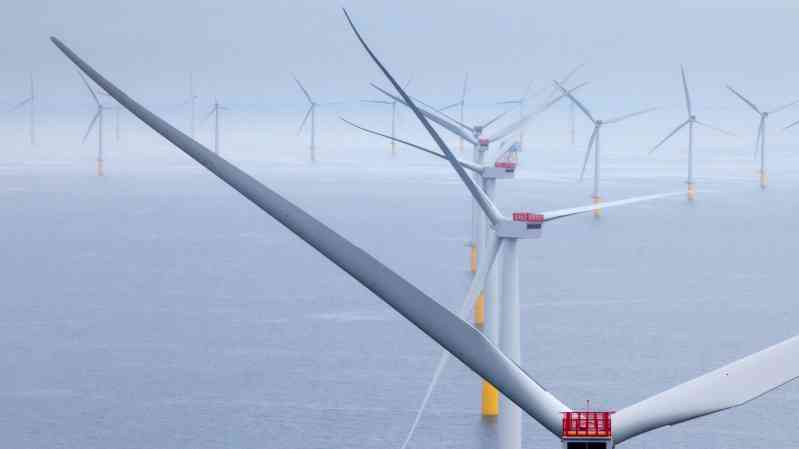The world’s biggest offshore wind developer has warned that profits will be at the low end of guidance this year because the weather has been far less windy than expected.
Orsted, which operates turbines in UK, Danish, German and Dutch waters, said it had seen “significantly lower than normal wind speeds across our entire offshore wind portfolio” this year. It said it needed wind speeds to return to normal in the remaining five months of the year to deliver operating profits even at the bottom end of its guidance range of 15-16 billion Danish kroner (£1.7-1.8 billion).
The calm weather compounded woes for Orsted after it uncovered problems with subsea cables wearing through earlier this year. The costs of a warranty provision related to dealing with the issue further knocked profits from operational wind farms, which fell by 4 per cent in the first half, despite an increase in installed capacity. Headline operating profits increased by 34 per cent due to gains on asset sales.
Orsted shares fell 4.2 per cent in Copenhagen yesterday as the outlook fell short of expectations.
Wind farm operators in Europe including SSE and Scottish Power have been similarly afflicted by the poor wind speeds this year. RWE, the German energy group and another of the world’s biggest offshore wind developers, also reported lower profits from its offshore wind operations yesterday.
Orsted was previously known as Dong Energy and started life as Denmark’s state oil and natural gas company before switching to offshore wind development. It has since installed more than a quarter of the world’s offshore wind capacity and owns or co-owns 12 offshore wind farms in UK waters. The company remains 50.1 per cent owned by the Danish government.
Wind speeds in the April to June period were among the lowest three quarters in the past two decades, Orsted said.
Mads Nipper, Orsted’s chief executive, said the group was confident wind speeds should recover and there were no indications that more extreme weather linked to global warming would change conditions permanently. “Over time the wind speeds have been incredibly stable. We build wind farms that have an average life time of 30-plus years and we have no reason to believe that this is something which will structurally challenge that,” he said.
Markus Krebber, chief executive of RWE, which also operates gas, coal and nuclear plants, struck a more cautious tone after its business was affected by floods and cold weather. “Aside from the fight against climate change we also have to deal with these weather effects becoming more regular,” he said.
